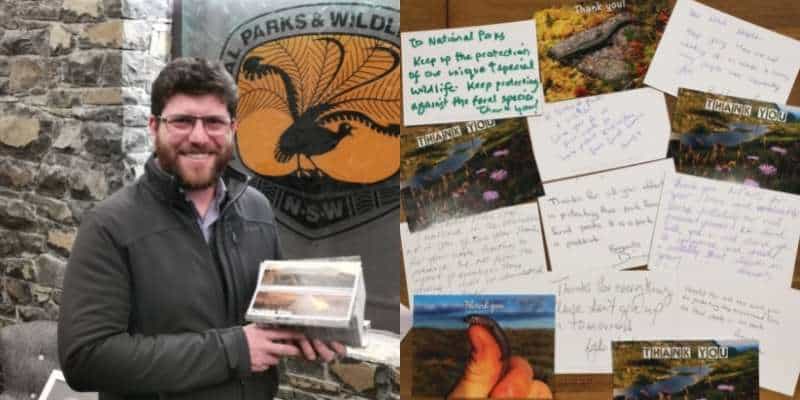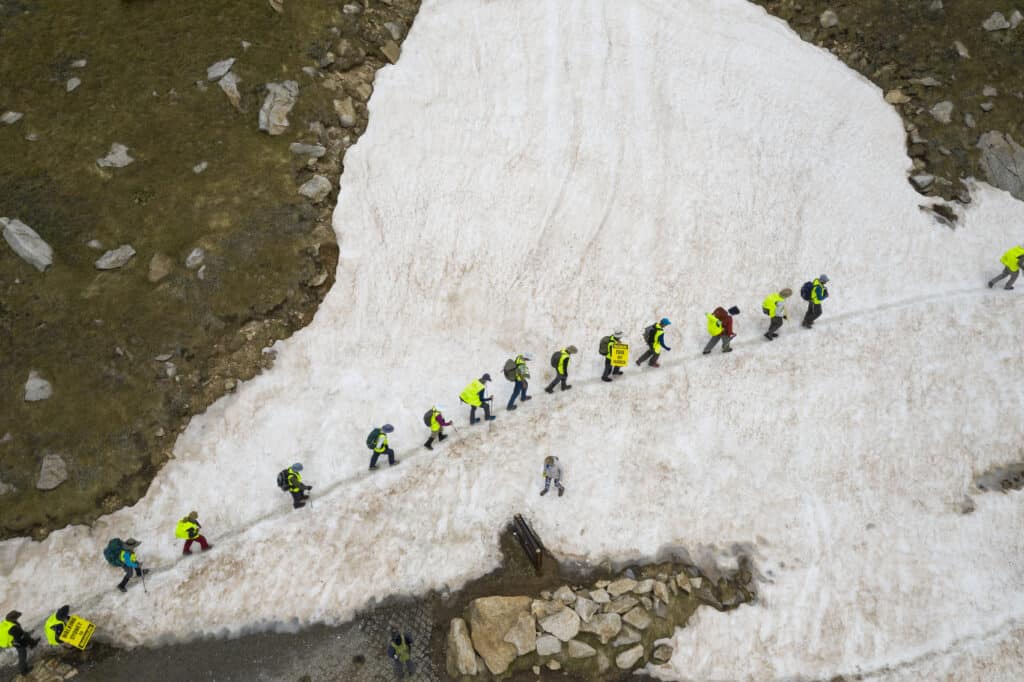A few months ago we put out a call.
An ABC Four Corners special in February on the ecological damage of feral horses in Kosciuszko National Park had highlighted the shocking abuse directed towards the park’s rangers and staff.
Australians from all over the country were moved by what they saw, and wanted to show their support for Kosci’s parkies. So we opened up a portal and invited you to submit your messages of support. The response was heart-warming.
Over 700 people responded, letting Kosci’s National Park staff know how much we value their work protecting our native wildlife and precious ecosystems from the damage of invasive species like feral horses. There were personalised messages of thanks, page-long professions of support and dusted-off photos of them enjoying the natural beauty of Kosciuszko National Park throughout their life.
Volunteers and staff behind our Reclaim Kosci campaign converted your messages into 700 unique postcards and, last month, we presented them to the NSW National Parks and Wildlife Service. Kosci’s rangers and staff were very appreciative and thankful for your support, and the messages inspired a new level of faith in all of us for the road ahead.

Kosciuszko’s feral horse problem
In 2020, it was estimated that 14,000 feral horses were roaming Kosciuszko National Park. With no natural predator, and an ineffective and inhumane trapping program, this herd has been able to exponentially grow to the huge detriment to Australia’s alpine regions.
Earlier this year, some of our campaigners ventured out to Gurrangorambla Creek up in the north of Kosciuszko National Park with Dr Ben Keaney as part of a wetland excursion to honour the life of the recently departed Professor Geoff Hope. Ben was one of Geoff’s students. They saw first hand the worsening damage feral horses are having on native ecosystems like alpine sphagnum bogs.
These fragile ecosystems in our alpine regions are home to native species like the critically endangered southern corroboree frog and are not equipped to survive the weight, grazing pressure or hard hoofs of introduced herbivores like feral horses. If we don’t begin to remove feral horses now, it’s not just a death sentence for these ecosystems, but also for Australia’s largest alpine park that is a vital water catchment for the wider landscape.
Reclaim Kosci
Thanks to relentless campaigning from Reclaim Kosci and Invasive Species Council supporters, the NSW Government released a new management plan for the feral horses in Kosciuszko National Park in November 2021. It was a milestone moment, with the plan committing to reduce the park’s feral horse population down to 3,000 animals over six years.
This Thursday, 28 July, the NSW National Parks and Wildlife Service published data confirming the new plan began to be implemented in February 2022.

But the job is far from done. The recently released management data shows us that feral horse removal rates will need to increase significantly to keep up with the population’s breeding rates and meet the plan’s commitments.
That means we need to keep advocating for more resources for humane feral animal management in the park and make sure Kosciuszko National Park’s rangers and staff are empowered to do their critical work. It also means continuing the push to have the protection status of the feral horses in the park revoked.
There is a lot of work still to be done before Kosciuszko National Park is released from its plight of feral horses. We wouldn’t be where we are today without your support, but we need you to stick with us to help Kosci’s parkies see this one through to the end.
More info:

